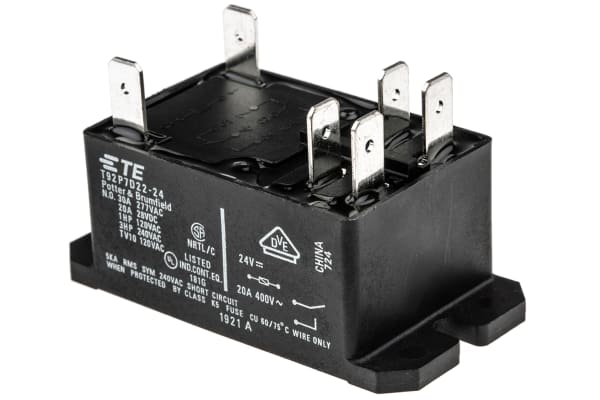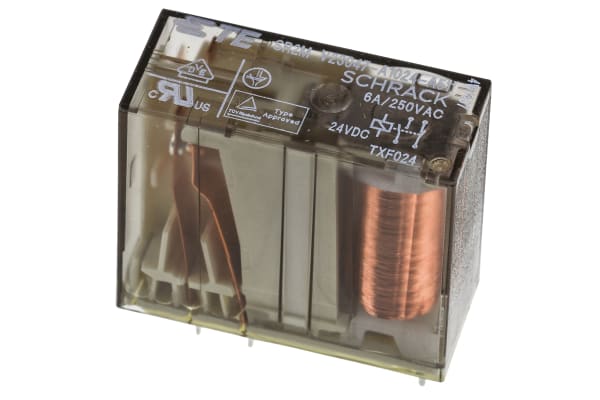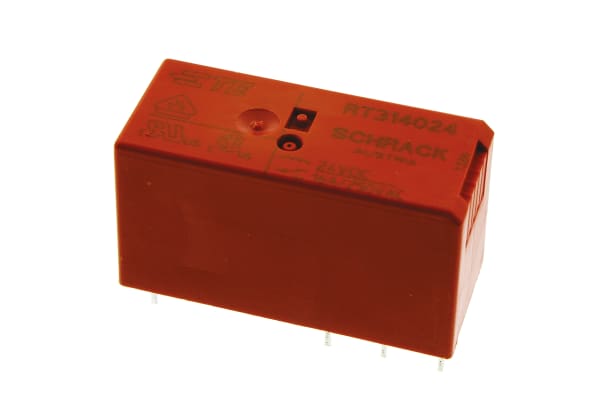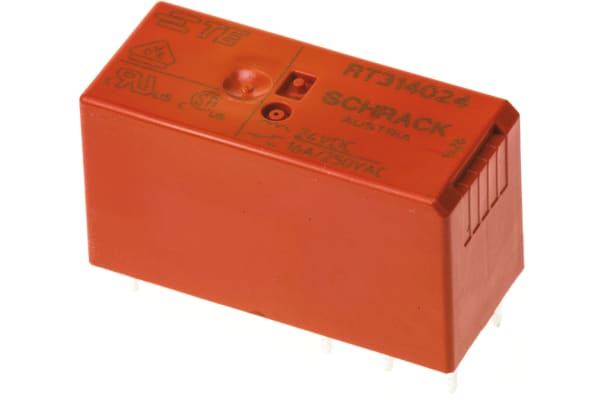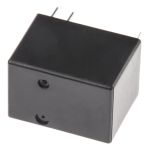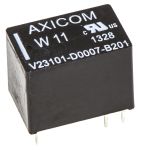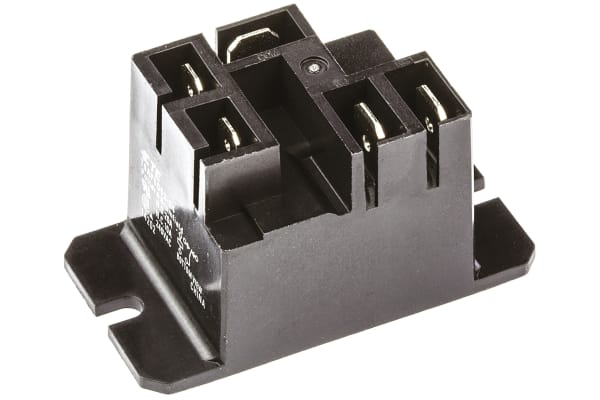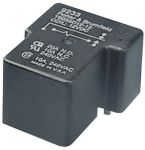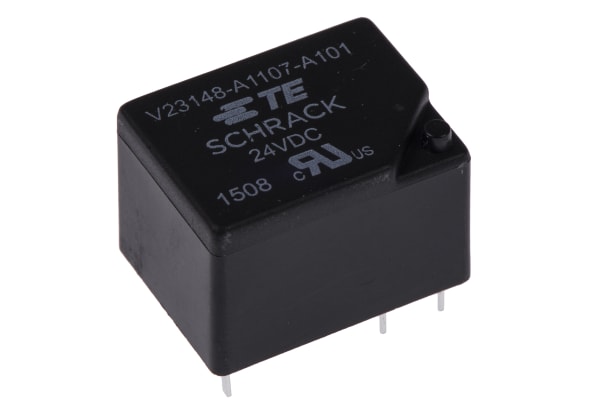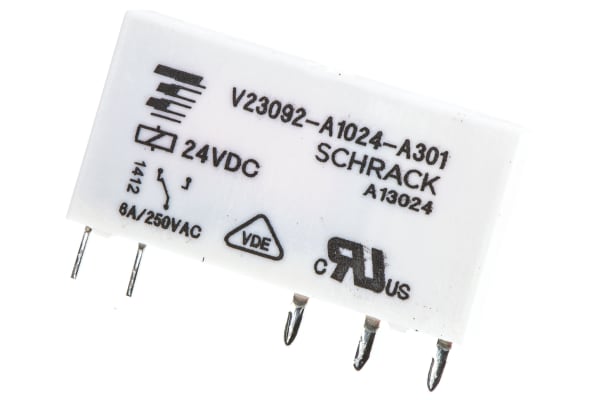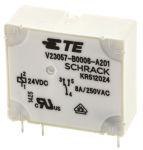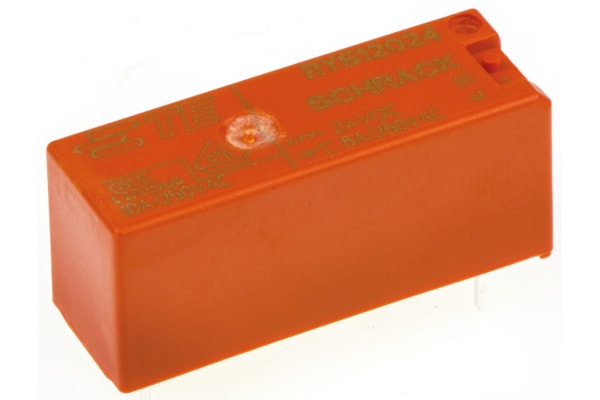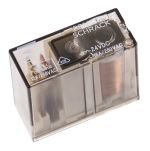Non-Latching Relays
Relays are electrical switches that are operated by electrical impulses with the primary function to open and close a circuit, they can also be referred to as industrial switches. There are 2 main types available, latching and non–latching relays.How do non-latching relays work?Non-latching relays are in a normally closed (NC) position and will stay in this state without power. When power passes through the circuit, the relay switched to a normally open (NO) position by using an internal coil to generate a magnetic force, holding this NO position. Once the current is turned off, it returns to the NC position. This makes non-latching relays well suited to push-button applications like keyboards and micro-controller input buttons.What are non-latching relays used for?Non-latching relays are highly durable and versatile components, making their performance long lasting and suitable for use in a wide range of applications, such as:Automotive enginesHousehold appliancesIndustrial machineryMedical equipmentTelecommunications equipmentWhat is the difference between latching and non-latching relays?Both types of relays in similar in design and function, however, a significant difference between them is that a latching relay will remain in the last position it when it was last powered, whereas a non-latching goes back to its normal position. This makes each more type of relay suitable for different applications. Considerations when selecting a relayWhen choosing a relay, it is important to consider a number of specifications to ensure it is fit for purpose, some factors include:Coil voltage – the required voltage to actuate the switching mechanism. If a voltage is too high this could damage the components, if it is too low then it will not actuate. Contact configuration – This is the state the contacts are in without power. For example SPST, single pole single throw.Contact material – the relay contacts are available in many materials that have certain properties. Common materials are gold, silver, tin oxide and nickel Coil power – the amount of power (watts) the coil operates at. This must match the power in the circuit for correct function. Coil resistance – the amount of resistance (ohms) in the circuit that the coil creates.
-
TE Connectivity, 24V dc Coil Non-Latching Relay DPDT, 8A Switching Current PCB Mount, 2 Pole, RTE24024
IDR801,674.27Box (1 Box of 20) -
TE Connectivity, 24V dc Coil Non-Latching Relay DPDT, 8A Switching Current PCB Mount, 2 Pole, RTE24024 1-1393243-0
IDR59,577.52 -
TE Connectivity, 24V dc Coil Non-Latching Relay DPNO, 30A Switching Current Flange Mount, 2 Pole, T92P7D22-24
IDR246,911.06 -
TE Connectivity, 24V dc Coil Non-Latching Relay DPNO, 8A Switching Current PCB Mount, 2 Pole, RT444024
IDR71,744.76 -
TE Connectivity, 24V dc Coil Non-Latching Relay SP-NO/NC, 6A Switching Current PCB Mount Single Pole, V23047-A1024-A511
IDR206,213.74 -
TE Connectivity, 24V dc Coil Non-Latching Relay SPDT, 10A Switching Current PCB Mount Single Pole, 1-1721150-5
IDR24,858.93 -
TE Connectivity, 24V dc Coil Non-Latching Relay SPDT, 12A Switching Current PCB Mount Single Pole, RT114024
IDR62,934.00 -
TE Connectivity, 24V dc Coil Non-Latching Relay SPDT, 12A Switching Current PCB Mount Single Pole, RTB14024
IDR62,514.44 -
TE Connectivity, 24V dc Coil Non-Latching Relay SPDT, 16A Switching Current PCB Mount Single Pole, RT314024 9-1393239-8
IDR1,109,106.86Box (1 Box of 20) -
TE Connectivity, 24V dc Coil Non-Latching Relay SPDT, 16A Switching Current PCB Mount Single Pole, RT314024 9-1393239-8
IDR71,115.42 -
TE Connectivity, 24V dc Coil Non-Latching Relay SPDT, 16A Switching Current PCB Mount Single Pole, RT315024
IDR152,510.06 -
TE Connectivity, 24V dc Coil Non-Latching Relay SPDT, 1A Switching Current PCB Mount Single Pole, OUAZ-SS-124L,900
IDR47,829.84 -
TE Connectivity, 24V dc Coil Non-Latching Relay SPDT, 1A Switching Current PCB Mount Single Pole, V23026A1004B201
IDR269,462.41 -
TE Connectivity, 24V dc Coil Non-Latching Relay SPDT, 1A Switching Current PCB Mount Single Pole, V23101D7B201
IDR151,670.94 -
TE Connectivity, 24V dc Coil Non-Latching Relay SPDT, 20A Switching Current Flange Mount Single Pole, T9AP5D52-24
IDR105,309.56 -
TE Connectivity, 24V dc Coil Non-Latching Relay SPDT, 30A Switching Current PCB Mount Single Pole,
IDR120,308.83 -
TE Connectivity, 24V dc Coil Non-Latching Relay SPDT, 5A Switching Current PCB Mount Single Pole, PE014024
IDR62,409.55 -
TE Connectivity, 24V dc Coil Non-Latching Relay SPDT, 5A Switching Current PCB Mount Single Pole, V23057-B0006-A101
IDR435,922.84 -
TE Connectivity, 24V dc Coil Non-Latching Relay SPDT, 5A Switching Current PCB Mount Single Pole, V23148A1107A101
IDR172,334.27 -
TE Connectivity, 24V dc Coil Non-Latching Relay SPDT, 6A Switching Current PCB Mount Single Pole, V23092-A1024-A301
IDR151,775.83 -
TE Connectivity, 24V dc Coil Non-Latching Relay SPDT, 8A Switching Current PCB Mount Single Pole, 8-1393215-1
IDR228,869.98 -
TE Connectivity, 24V dc Coil Non-Latching Relay SPDT, 8A Switching Current PCB Mount Single Pole, RY612024
IDR97,652.59 -
TE Connectivity, 24V dc Coil Non-Latching Relay SPDT, 8A Switching Current PCB Mount Single Pole, V23061B1007A501
IDR62,934.00 -
TE Connectivity, 24V dc Coil Non-Latching Relay SPNO, 16A Switching Current PCB Mount Single Pole, RP3SL024 1-1393230-1
IDR239,254.09




